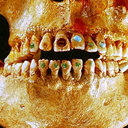Isolation and Identification of Phyllospheric Bacteria Possessing Antimicrobial Activity from Astragalus obtusifolius, Prosopis juliflora, Xanthium strumarium and Hippocrepis unisiliqousa.
Mots clés
Abstrait
BACKGROUND
The widespread utilization of antimicrobial compounds has caused emergence of resistant microorganisms in the world. Hence, the research to probe the products with antimicrobial features has led to finding natural habitats and discovering new pharmaceutical products.
METHODS
In this study, an attempt was made to explore the niche of novel habitat to isolate pyllospheric bacteria from the above ground parts (stems and leaves) of Astragalus obtusifolius, Prosopis juliflora, Xanthium strumarium, and Hippocrepis unisiliqousa to evaluate their antimicrobial features. The inhibitory effects of these strains on the growth of two fungi (Aspergillus niger, Aspergillus fumigatus), two yeasts (Saccharomyces cerevisiae, Candida albicans) and six bacteria (Escherichia coli, Staphylococcus aureus, Pseudomonas aeruginosa, Bacillus subtilis, Salmonella typhi, Streptococcus pyogenes) were tested.
RESULTS
In total, 113 bacterial strains were isolated. Twenty five bacterial strains (B-1 to B-25) indicated promising antimicrobial (antibacterial and antifungal) activities against aforementioned pathogens. The identification of the bacterial strains was ascertained by morphological, physiological, biochemical tests and two strains with the strongest antimicrobial activities were further characterized based on 16s rRNA sequencing. These two strains were identified as Bacillus amyloliquefaciens.
CONCLUSIONS
Our results provide evidence that phyllospheric microorganisms are capable of producing some compounds with antimicrobial properties.


